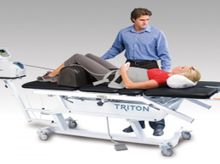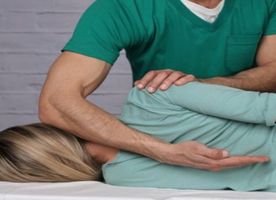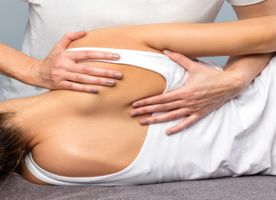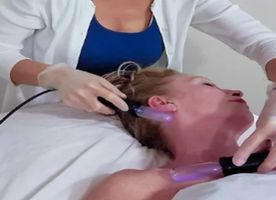Decompression Therapy in Vietnam
Search and Compare the Best Clinics and Doctors at the Lowest Prices for Decompression Therapy in Vietnam



Decompression Therapy at Maple Healthcare Center - District 3 in Ho Chi Minh City, Vietnam




Decompression Therapy at Mandala Wellness Centre in Ho Chi Minh City, Vietnam
Our partner clinics in are accredited by the following associations



































































































































No Time?
Tell us what you're looking for and we'll reach out to the top clinics all at once
WHY US?



































































































































No Time?
Tell us what you're looking for and we'll reach out to the top clinics all at once
What does a Decompression Therapy Procedure Involve?
During spinal decompression therapy, your doctor will strap you to the spinal decompression table using a harness around your pelvis and trunk. You may lie face up or face down on the table. To keep you comfortable and your spine in the correct position for decompression, pillows will be used. Once you are in the correct position, the doctor will operate the table using a computer and customize treatment to your specific needs. While the upper part of the table remains in a fixed position, the lower part moves back and forth, providing traction and relaxation.
Some patients with extensively injured disc may experience mild discomfort, but the procedure is typically painless and relaxing. Should you feel any discomfort; the doctor can stop the therapy at any point. The therapy usually lasts around 30 to 45 minutes.
How Long Should I Stay in Vietnam for a Decompression Therapy Procedure?
As pointed out earlier, Decompression Therapy, also known as decompression therapy, doesn't require any hospital admission after the process. Each step of the therapy usually lasts for around half an hour to 45 minutes and allows individuals to carry on with their usual activities right after the session. However, the whole therapy usually comprises numerous sessions, approximately 20 to 28 sessions over a span of one to one-and-a-half months, contingent on the treatment necessity per the medical condition severity.
Thus, if an individual who doesn't live in Vietnam intends to undergo this therapy, it would be wise to prepare for a lengthy stay to allow going through all therapeutic sessions in accordance with the treatment strategy. This precaution will prevent any discontinuity and provide the maximum advantage to the individual. Vietnam might also propose additional services like physiotherapy or nutrition counseling that can augment and facilitate the recovery process of the therapy.
What's the Recovery Time for Decompression Therapy Procedures in Vietnam?
The time required to bounce back after the Decompression Therapy varies on a person-to-person basis, hinging on the seriousness of their conditions. Quite a few beneficiaries of the treatment start noticing a discernible relief in pain after just a few encounters. But for some, complete recuperation could stretch out over several weeks or even months.
For the therapy itself, little to no downtime is required. You should take it easy for the remainder of the day, but you may be able to resume your normal activity the next day. You should also make sure to avoid any strenuous activity for several days. It's key to remember, however, that even with the reduction in discomfort, patients should see through the entire recommended therapy plan to reap the optimum benefit. This is due to the fact that the process of decompression allows for the best conditions for the repair of affected discs.
What sort of Aftercare is Required for Decompression Therapy Procedures in Vietnam?
The aftercare required following a Decompression Therapy is relatively uncomplicated in contrast to that of other therapies. People can generally resume their daily routines immediately after each session. Nevertheless, there are certain guidelines recommended to assist the healing process and optimize the therapy's benefits. Among these are instituting a routine of regular exercise and maintaining a good posture - essential elements in ensuring ideal spinal health. Adhering to these guidelines typically results in the patient controlling their symptoms more effectively and for extended periods.
Further, because this treatment seeks to enhance spinal health, applying Decompression Therapy jointly with other supportive treatments such as physiotherapy, adjustments by chiropractors, or massage therapy may further amplify the results. Alongside this, it's critical to uphold a healthy diet, keep fully hydrated, and apply efficient stress management strategies in pursuit of holistic wellness.
What's the Success Rate of Decompression Therapy Procedures in Vietnam?
More research is required to establish the effectiveness and safety of spinal decompression therapy. Research into the therapy is ongoing, with a number of studies showing that the results are favorable. In Vietnam, the effectiveness of Decompression Therapy can tremendously fluctuate relying on multiple factors such as the patient's general health, the seriousness of the spinal disorder, and the distinct kind of treatment employed. Yet, many clinical researches remark significant enhancement in a majority of the patients.
Even though Decompression Therapy has proven efficient for a multitude of patients, it's significant to remember that every patient's situation and reaction to treatment may vary. Thus, it's always crucial to engage in a consultation with a healthcare expert for an appropriate diagnosis and a custom-made treatment scheme. In some circumstances, patients may need supplementary treatments or therapies in combination with Decompression Therapy to achieve optimum results.
Are there Alternatives to Decompression Therapy Procedures in Vietnam?
The alternatives to spinal decompression therapy include physical therapy, chiropractic treatment, acupuncture, exercise, limited rest, bracing, nonsteroidal anti-inflammatory drugs (NSAIDs), and steroid injections. Alternatively, you can also undergo surgical spinal decompression, such as laminectomy. Make sure to consult with your doctor the best alternative for your specific case.
This information has been accurately sourced and verified by a medical professional for its accuracy, however, we strongly recommend you to consult with your doctor before pursuing medical procedures overseas.






